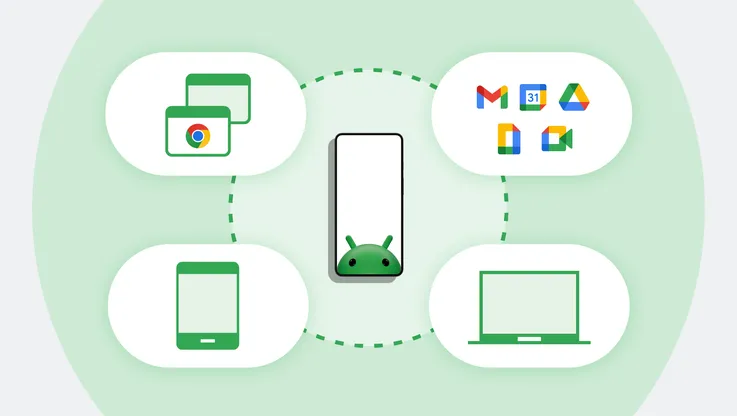

Because of how it is disposed of, electronic waste, which includes gadgets like mobile phones, laptops, chargers, and kitchen and other home accessories, is becoming a major issue worldwide. Fortune Business Insights estimates that the global consumer electronics market will be worth more than $700 billion in 2023. With millions of tonnes produced annually, the World Health Organization has identified e-waste as the global solid waste stream with the fastest growth rate. Below, we have listed unique reuses of discarded wires, circuits, and all unwanted tech waste from computers and home appliances, repurposed into a variety of fields such as couture fashion, furniture, footwear and more.
SCHIAPARELLI
E-Waste Fashion The luxurious Italian haute couture house known for its avant-garde designs in contemporary couture, Maison Schiaparelli, has incorporated electronic waste into their runway designs for the Spring 2024 couture collection. The creations in the collection, which ranged from mini dresses to a mini robot that was a custom Schiaparelli upcycled accessory, were all made from recycled electronic waste. The designer’s creations featured discarded phone gadgets, broken cables and wires, electronic chips and circuits, and other tech waste, presenting a modern, futuristic design concept from electronic waste.
TAKINOLA TEGA Discarded USB Cable Footwear
Tega Akinola, a creative designer and talented Gen-Z artist based in the UK, ventures into footwear and accessories with an interest in discarded and forgotten materials. Her footwear, experimented with materials made from e-waste like cables and USB chords, artfully designed on second-hand heels and slippers, shows fashionable products from unwanted materials. This young artist experiments with old materials to create art-like products that create one-of-a-kind designs and demonstrates a desire for sustainable fashion in the future. THE KING’S MINT Recycled E-Waste Gold
A facility to recycle gold from electronic waste has been set up by the Royal Mint, the official mint of the United Kingdom with more than 1,100 years of history, for a sustainable jewelry line. In the process of recovering precious metals, up to 4,000 tonnes of circuit boards are to be sourced annually from waste electronic devices such as phones, laptops, and TVs in the UK. As an alternative to traditional mining, they are extracting gold from existing discarded materials given the tonnes of e-waste produced annually and thrown away, using a patented technology for sustainable gold in jewellery.
SNOHETTA
Tiles made of e-waste In 2022, the Norway-based architecture firm collaborated with the Belgian Studio Plastique, a research-based sustainable design firm, to produce tiles made from recycled electronic waste. The project, Common Sands Forite Tiles, mimics the terrazzo effect. They extracted glass for these repurposed tiles from a significant amount of gadget, computer monitor, and microwave oven electronic waste. The vision shared by Snhetta and Studio Plastique aims to reduce waste and investigate additional options for addressing human-caused enormous waste practices, expanding research into this project for a sustainable product made from industry waste. Later, they said that an Italian ceramic tile manufacturer had also joined this idea and made recycled tiles. SIPA ALEXANDRA Dress made of discarded electric wire A women’s clothing line was created by Romanian designer Alexandra Sipa using recycled electric wires that were fashioned into various dresses. She created eco-friendly, vibrant dresses by bending the wires from recycling centers into ruffles and other shapes. She claimed to use her hometown’s traditional Romanian lace-making design techniques on wire patterns. Turning unwanted wires into wearable art, she reimagines and discusses how tonnes of electric waste are generated globally and explores the potential of using it in various methods in the fashion industry through creative edge and positive impact apparel designing.
FORMAFANTASMA
Furniture from e-waste Formafantasma, an Italian studio for ecological research and design, has developed a sustainable design concept for furniture using electronic waste. From salvaged electronic waste, cabinet drawers, tables, laptop stands, holders, and desks have been constructed. Utilizing readily available materials, they conducted research on technology scraps that could be incorporated into furniture for future design purposes. They claim that the project, which is referred to as the Ore Streams, is an investigation into the management of electronic waste. It involves breaking down waste into recycled products that are stylish, modern, and extremely waste-reducing and environmentally friendly. It’s hard to manage such a lot of waste, but raising brand and individual awareness can encourage more mindful consumption. Strategies for proper use and repurposing assist in preserving materials and promoting sustainability. By catering to the requirements of responsible practices, addressing the environmental impact of e-waste encourages the development of more sustainable product life cycles.





